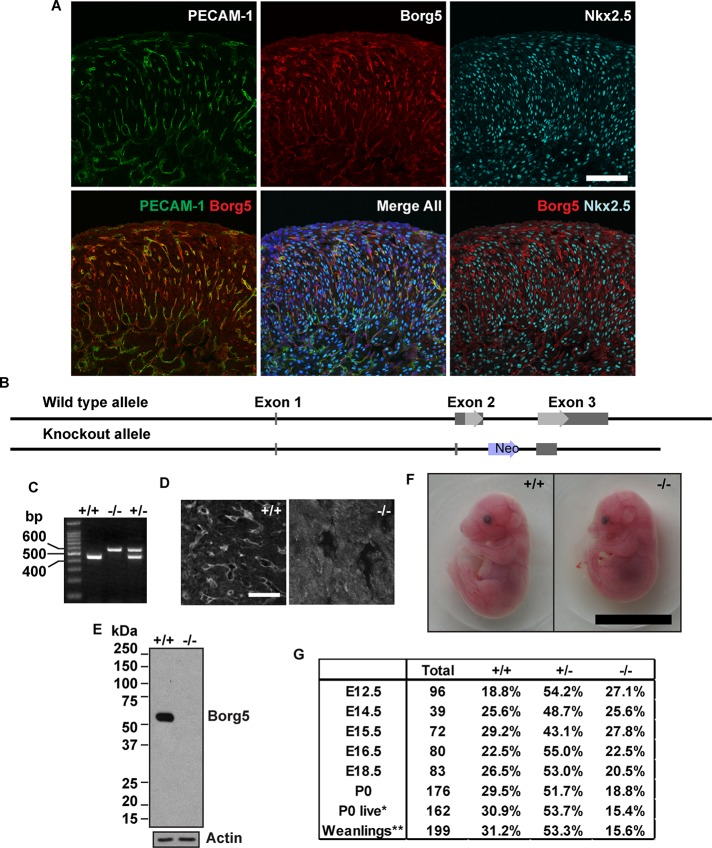FIGURE 1:
Generation of Borg5-null mice. (A) The expression of Borg5 in mouse embryonic heart. Confocal images of wild-type E16.5 heart sections stained with Borg5 rabbit polyclonal antibodies together with antibodies to PECAM-1 or Nkx2.5. Borg5 was found exclusively in ECs labeled with PECAM-1 but not in cardiomyocytes labeled with Nkx2.5. Scale bars: 100 μm. (B) Gene-targeting strategy. The entire coding sequence of Borg5 (light gray arrows) together with part of the intron sequence was replaced by a neomycin-resistance gene (Neo). The noncoding regions of the exons are illustrated as dark gray bars. (C) Mouse tail PCR of the wild-type and knockout alleles produced DNA fragments of 454 base pairs and 578 base pairs, respectively. (D) Immunofluorescence staining of frozen heart sections from wild-type (+/+) and Borg5-null (−/−) embryos at E15.5 using the rabbit Borg5 antibody. No specific Borg5 staining was found in the Borg5-null (−/−) mouse heart. Scale bar: 50 μm. (E) Western blotting analysis of primary MCEC lysates using a Borg5 antibody generated in chicken. The lack of Borg5 protein in Borg5-null (−/−) MCECs confirms the correct targeting. Actin was used as a loading control. Similar results were obtained with the rabbit antibody for Borg5. (F) Wild-type and Borg5-null littermates at E16.5. No gross developmental defects were observed in the mutant. Scale bar: 1 cm. (G) Offspring of each genotype recovered from Borg5+/− mating pairs. A significant reduction of Borg5−/− mice was observed at P0 and at weaning. P0, total pups recovered at birth. P0 live, live pups recovered at birth. Statistical analysis by chi-square test, *, p < 0.05; **, p < 0.01.

